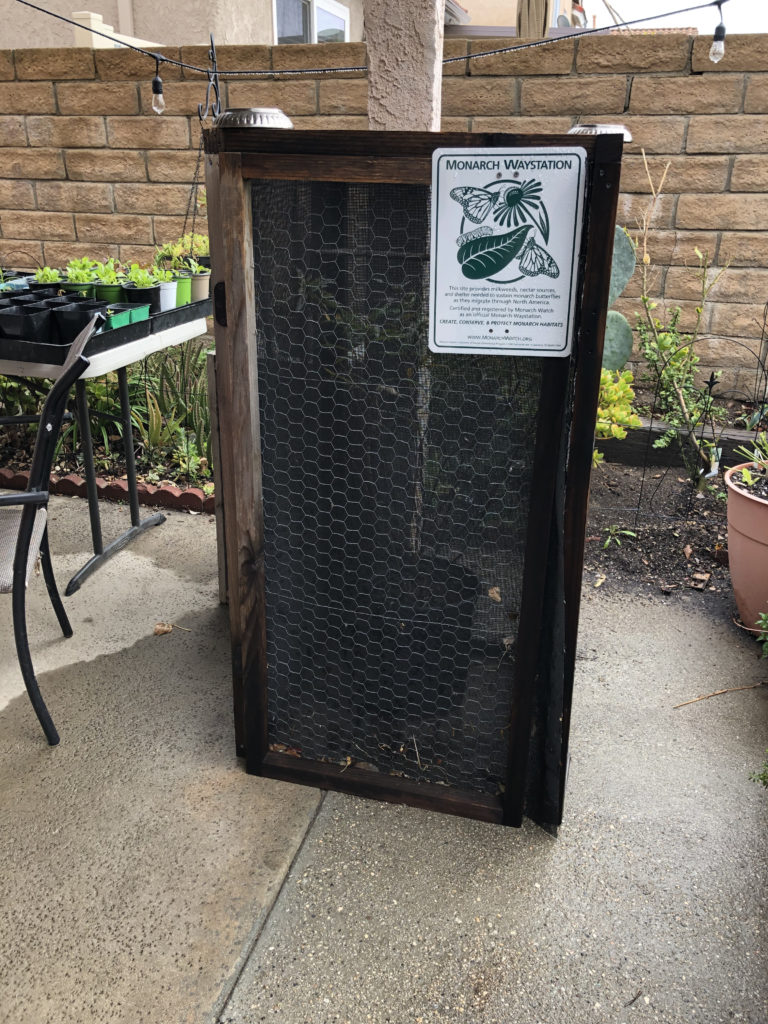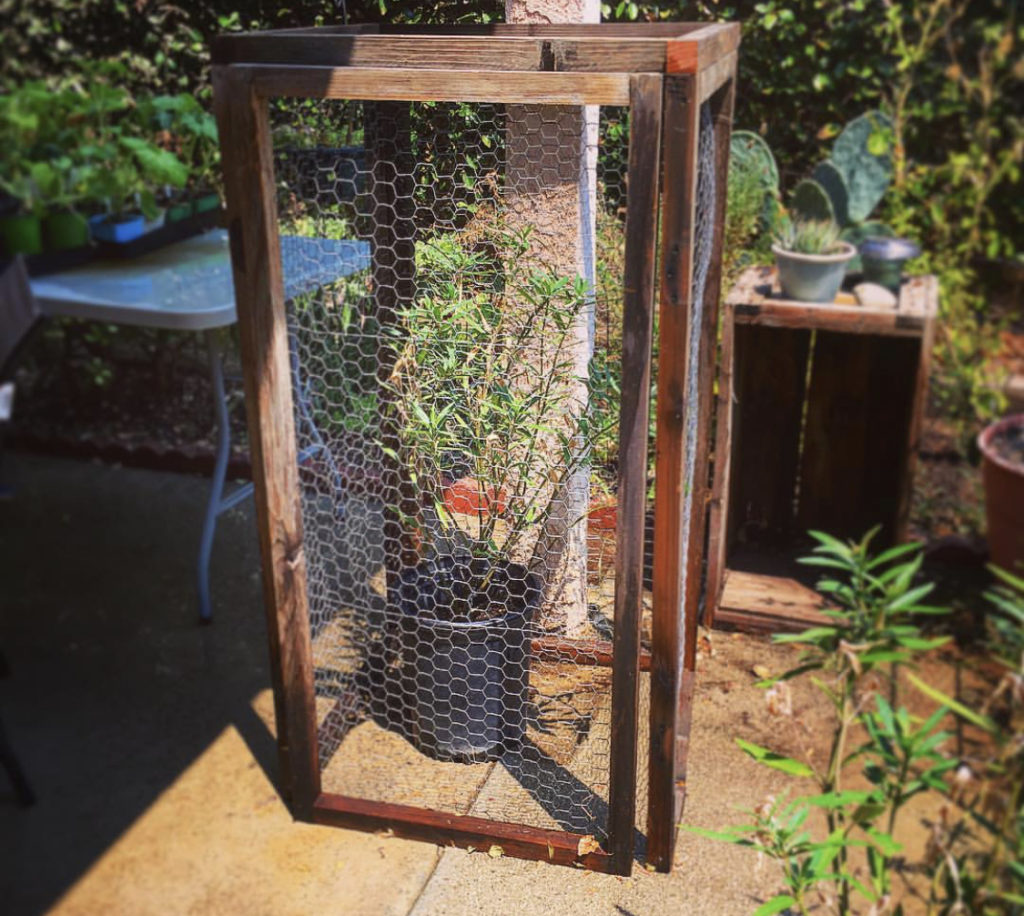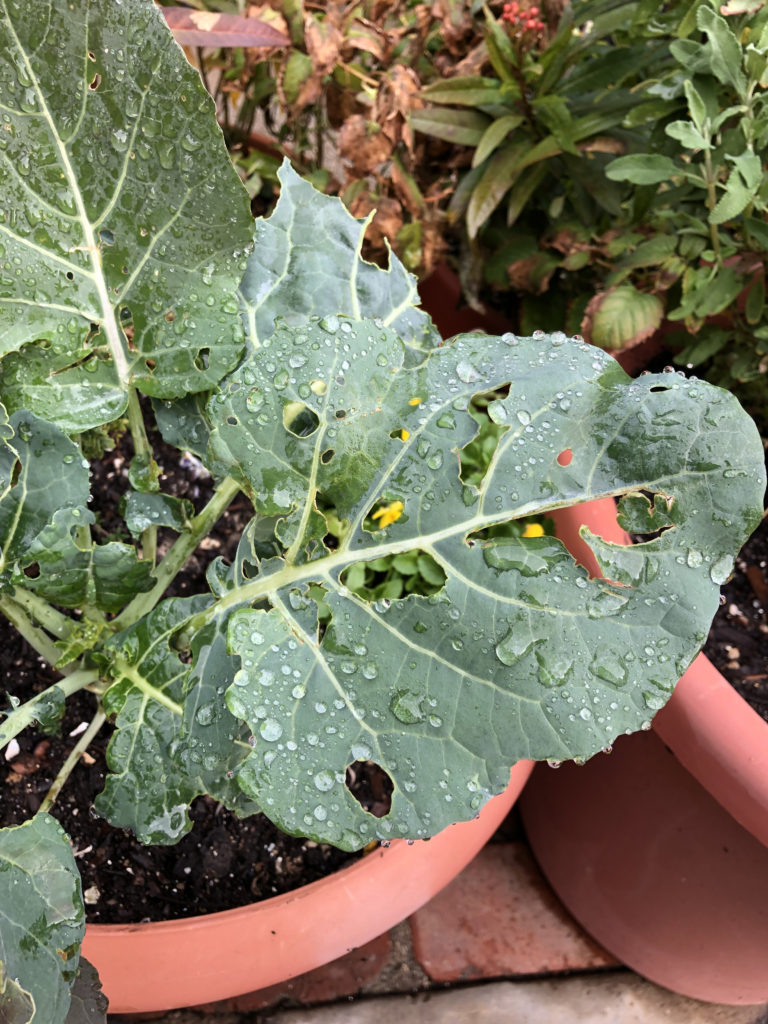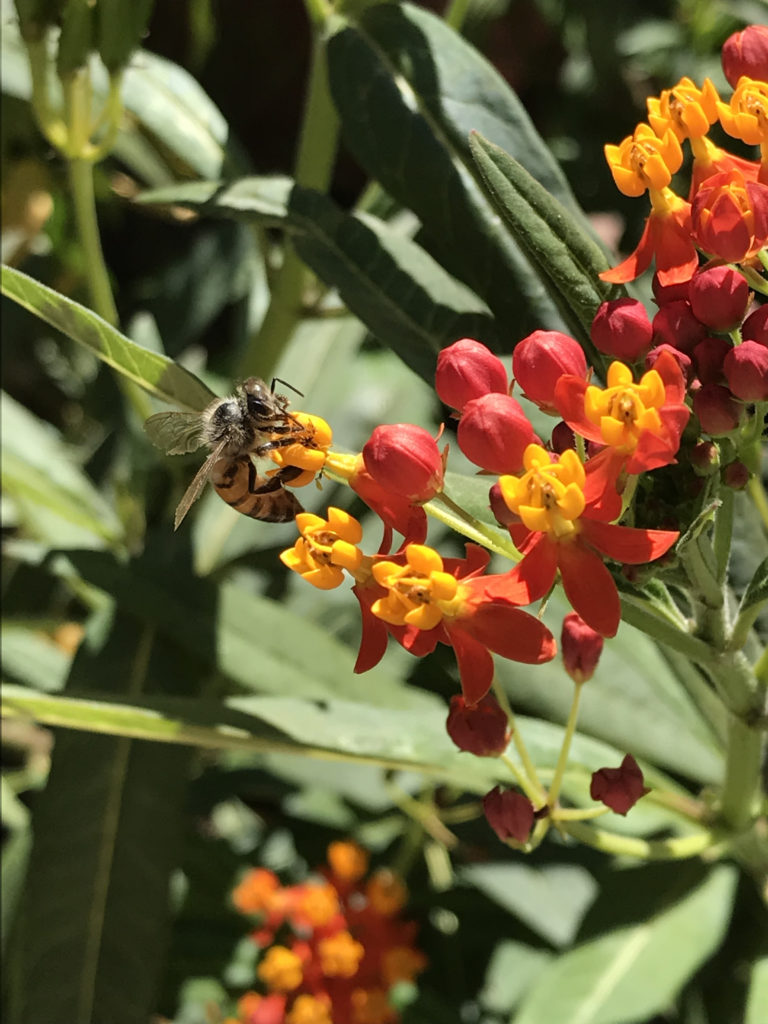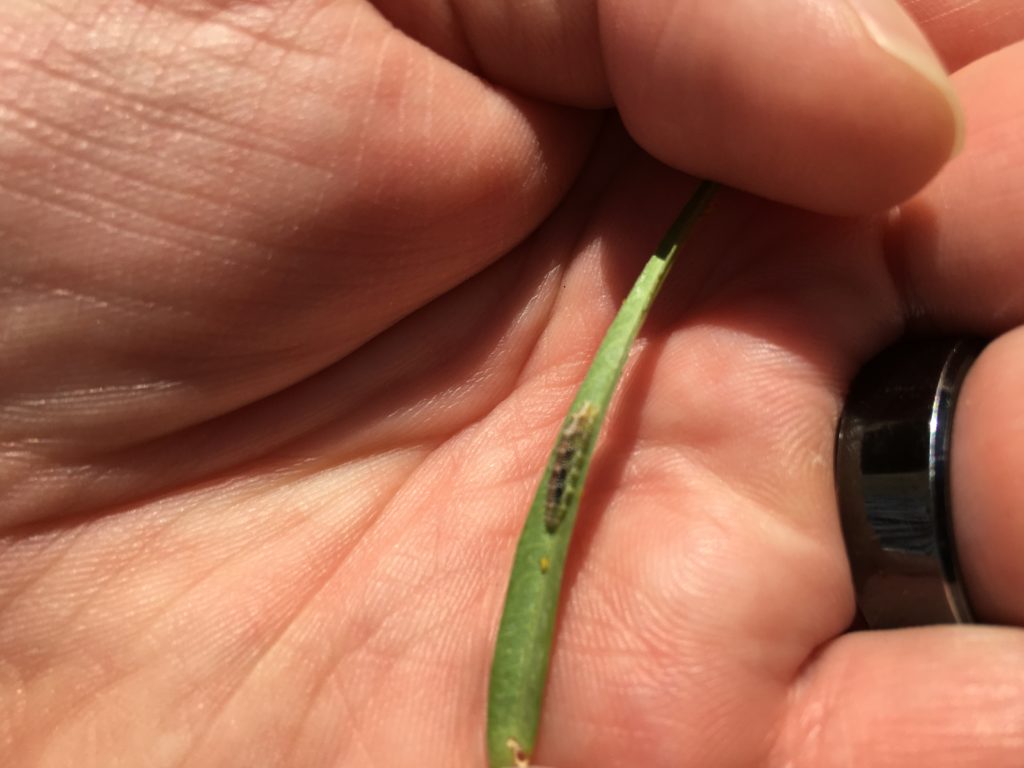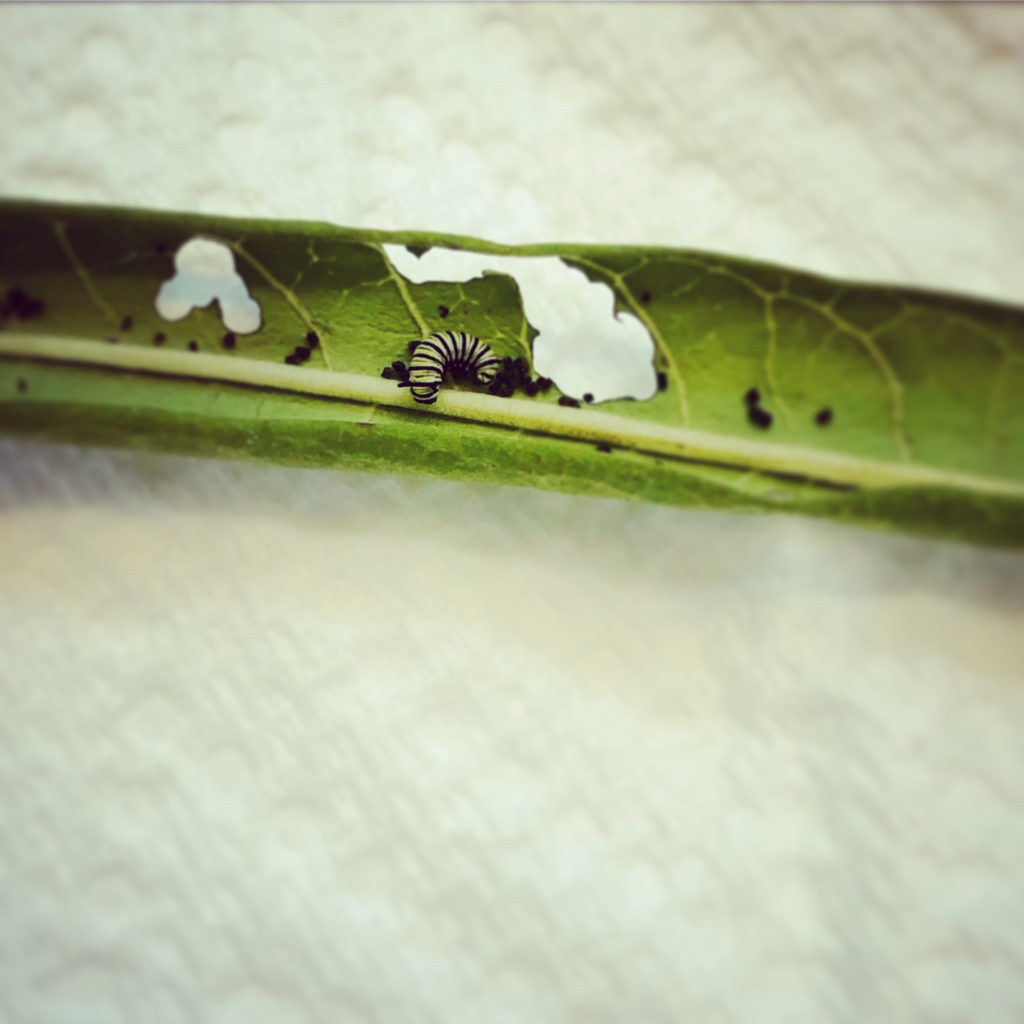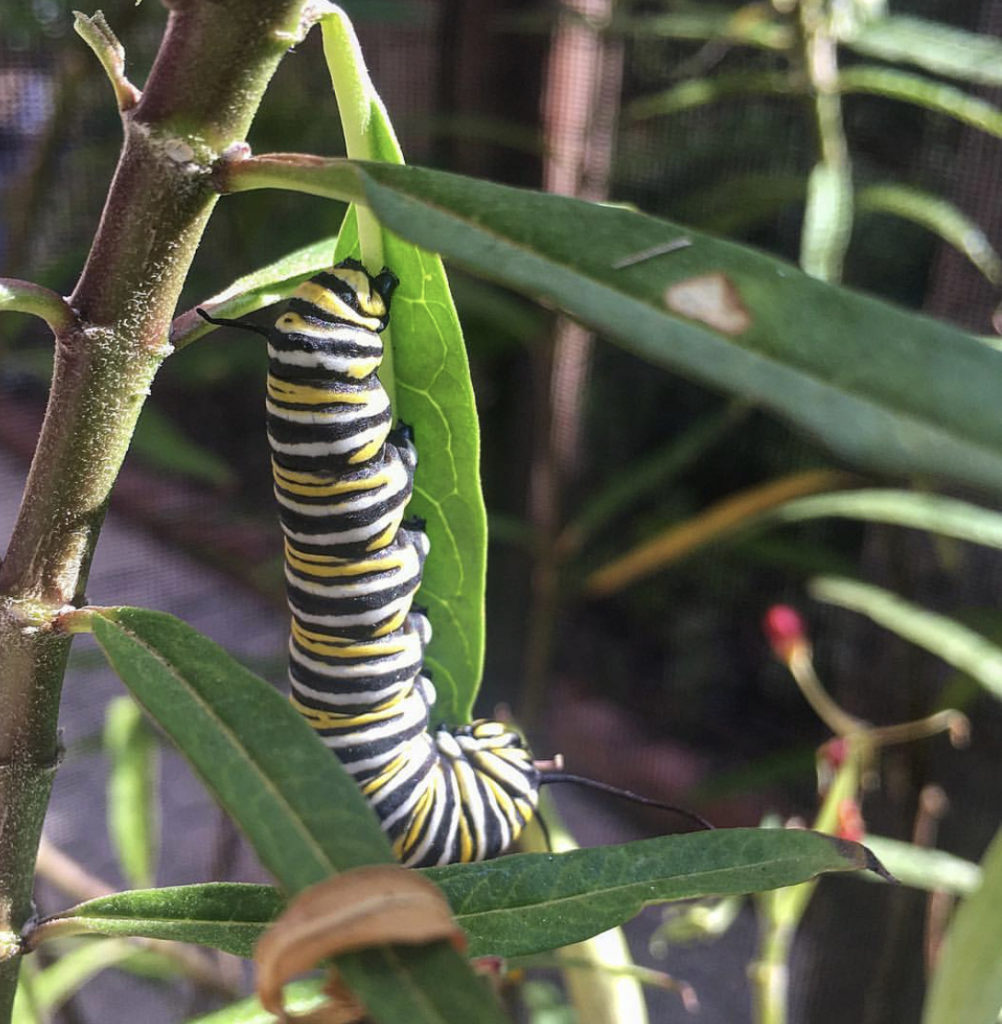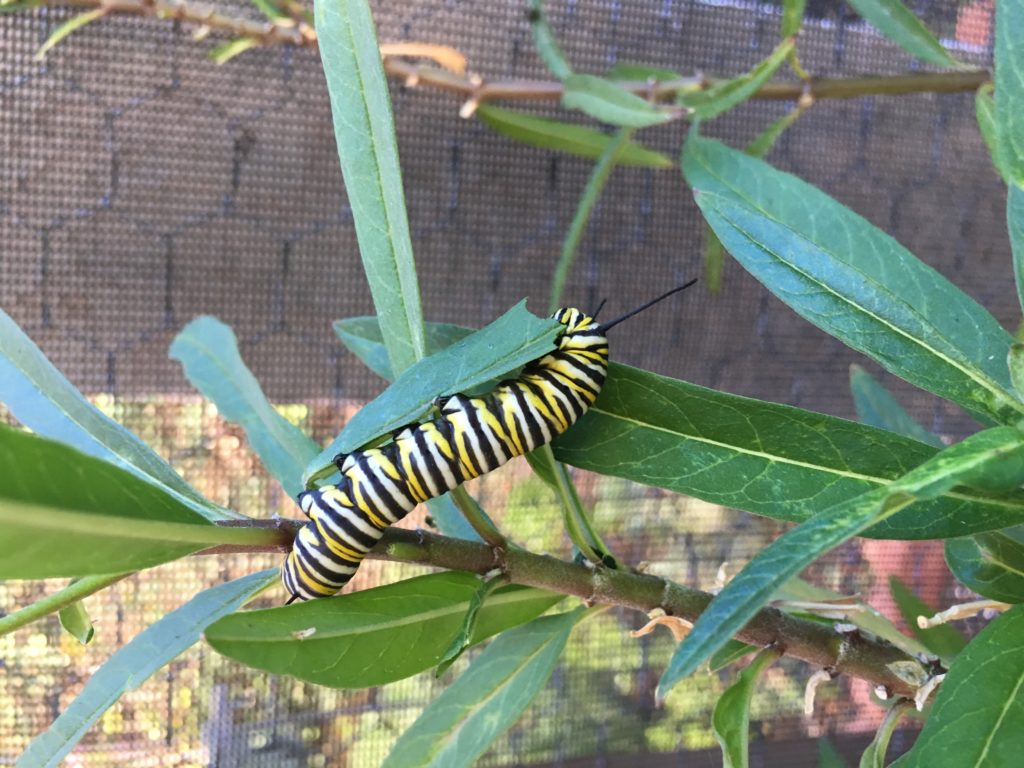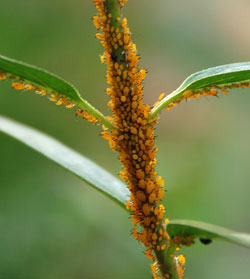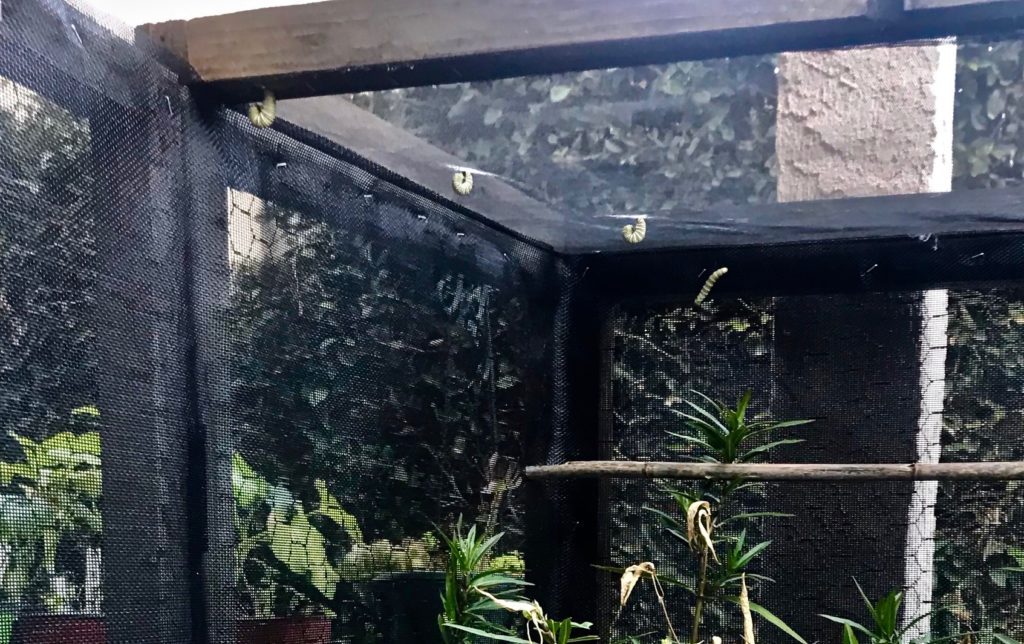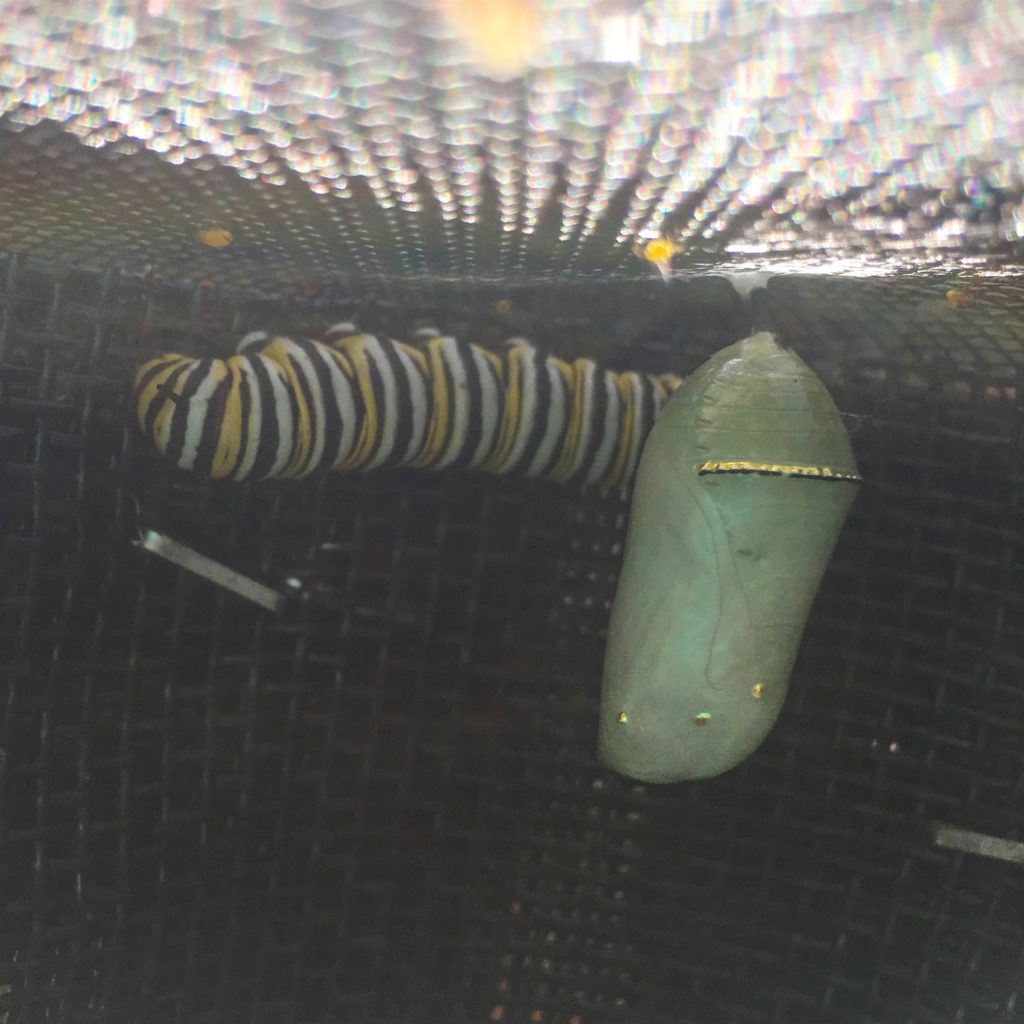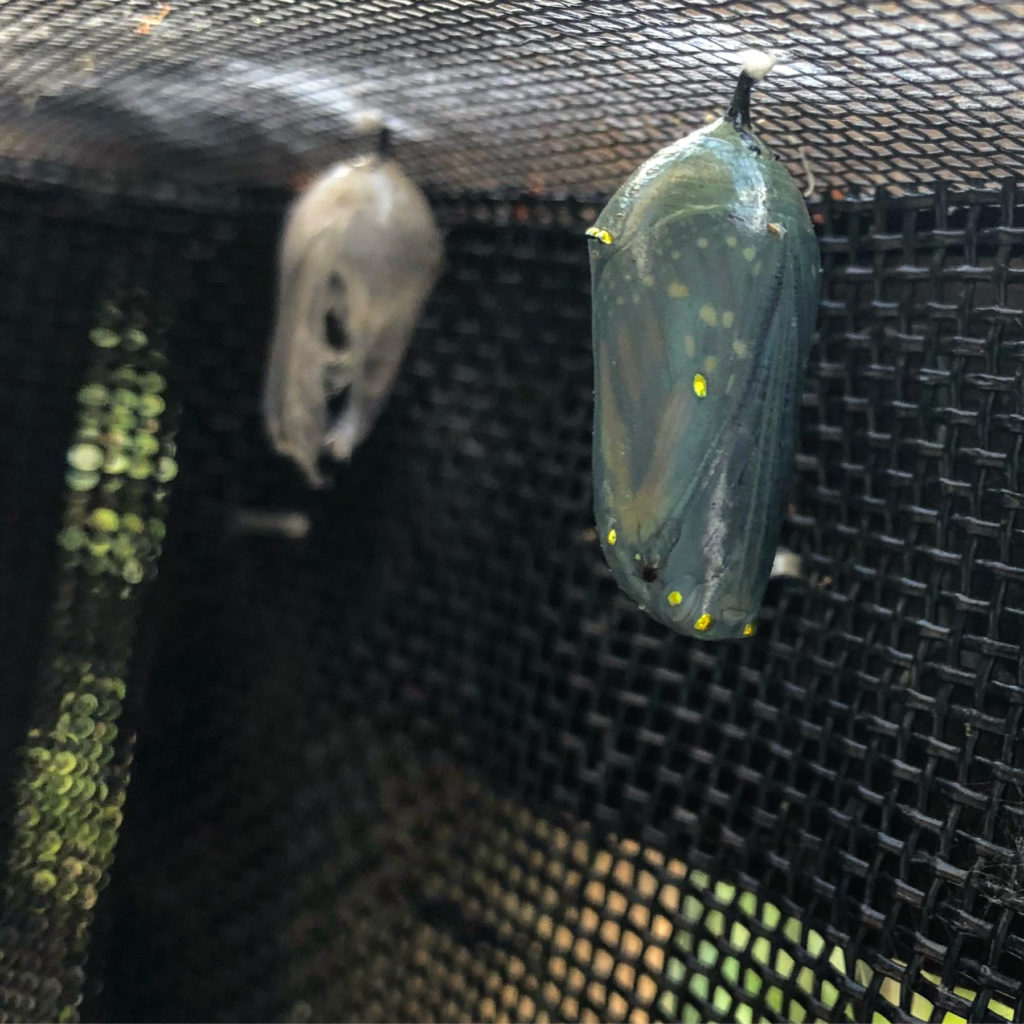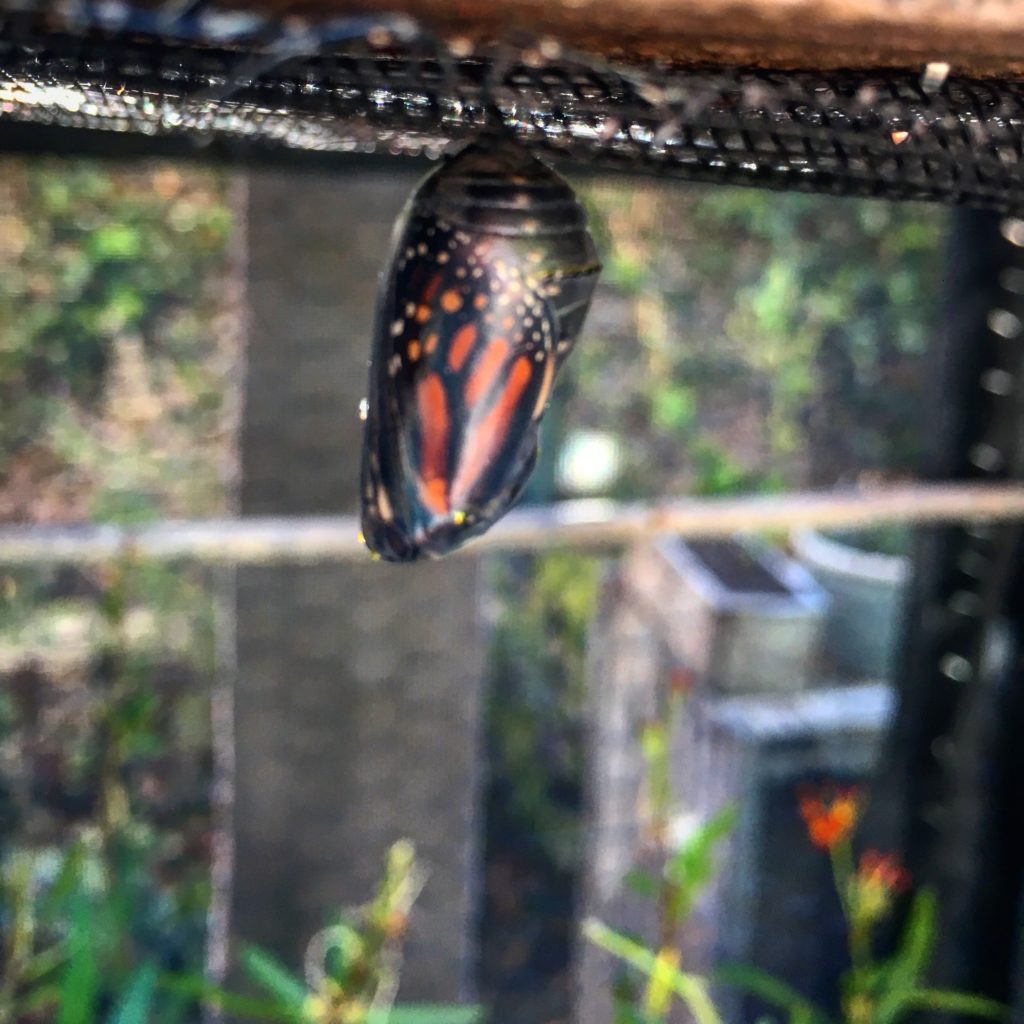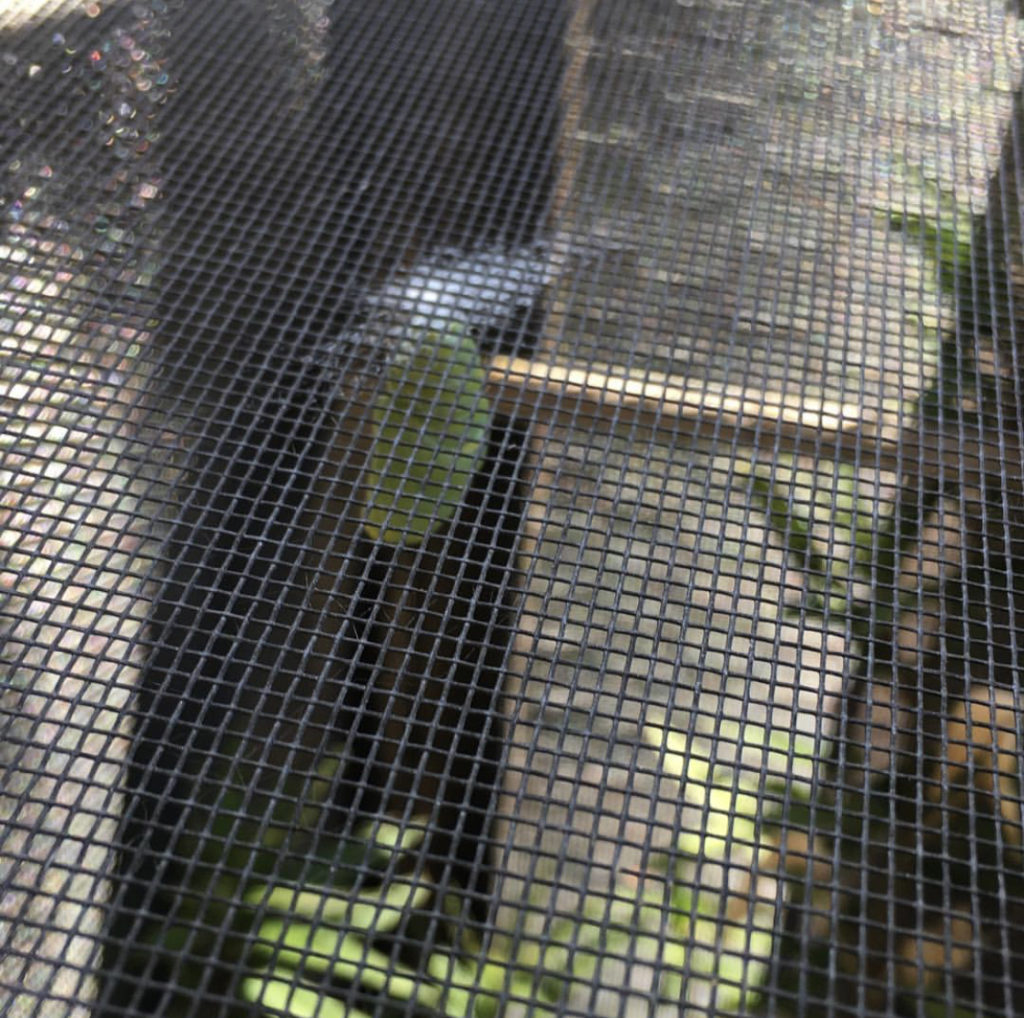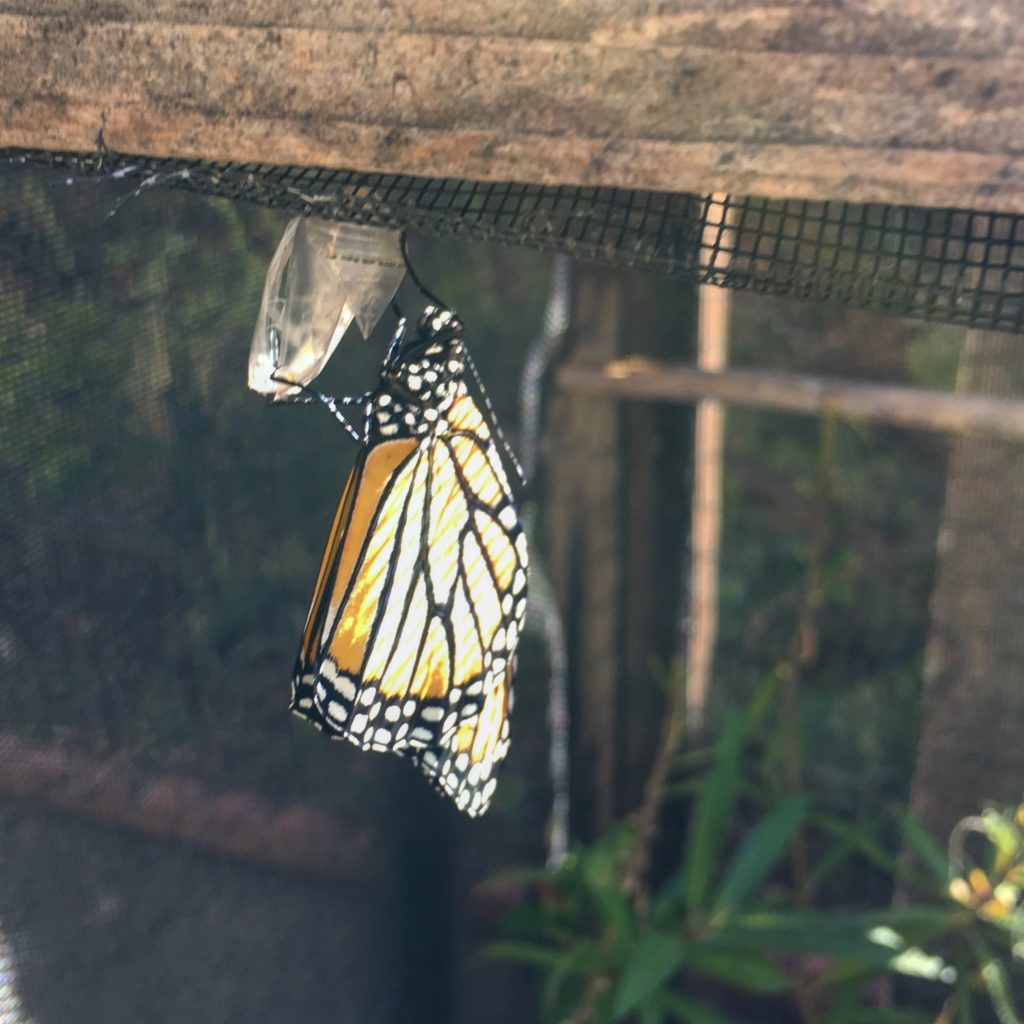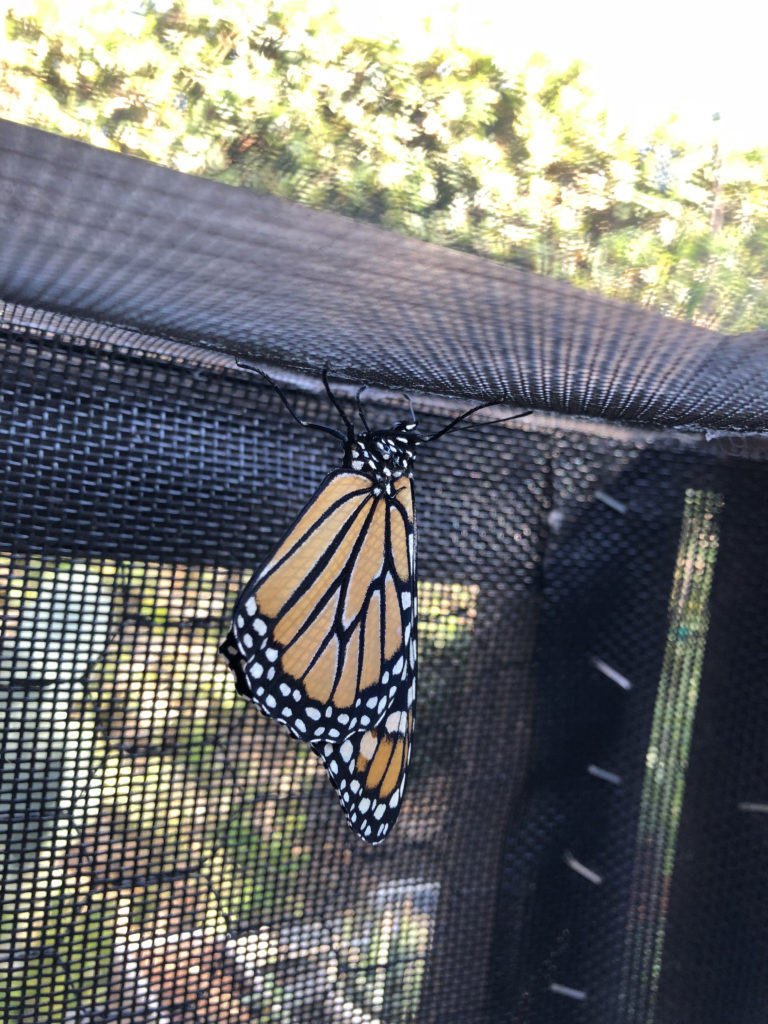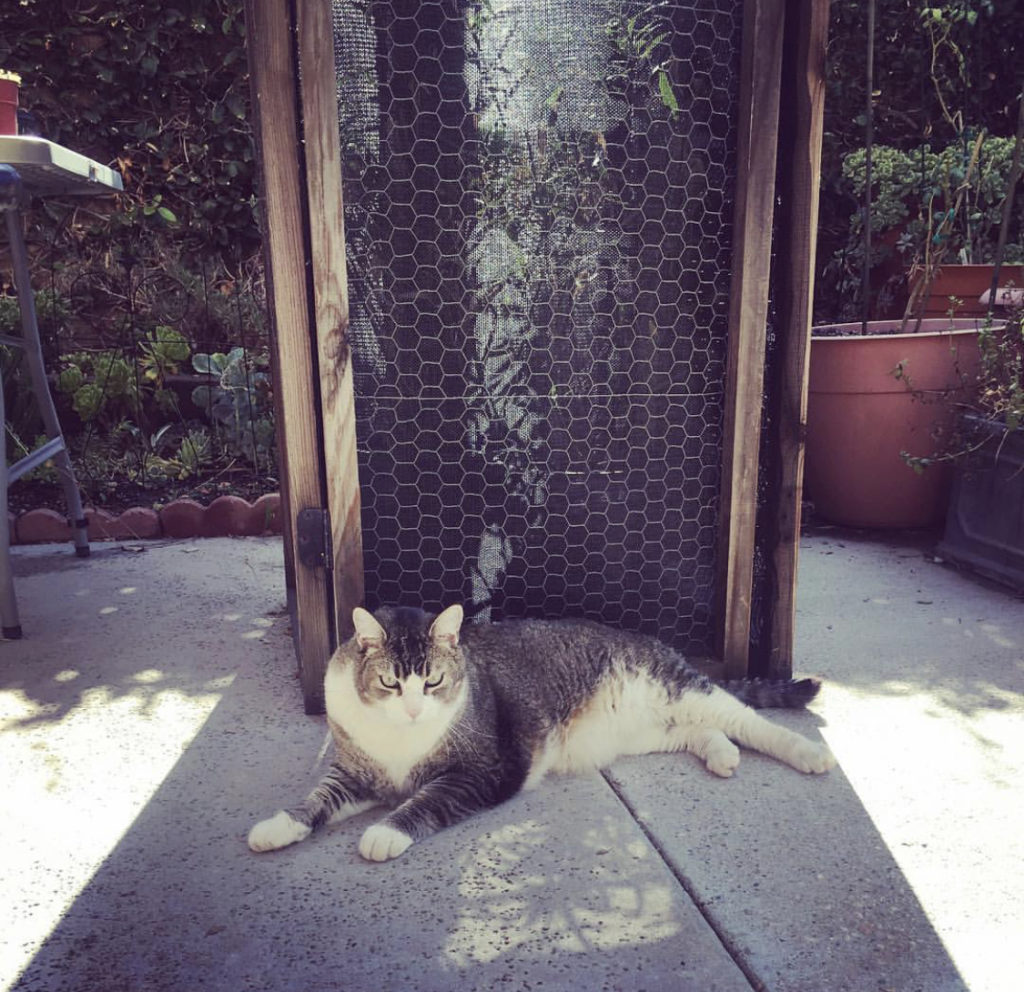Save the Monarchs…in your own backyard. A guide to attracting and raising butterflies. – Hope Gardens Hope Gardens Save the Monarchs…in your own backyard. A guide to attracting and raising butterflies. – Hope Gardens
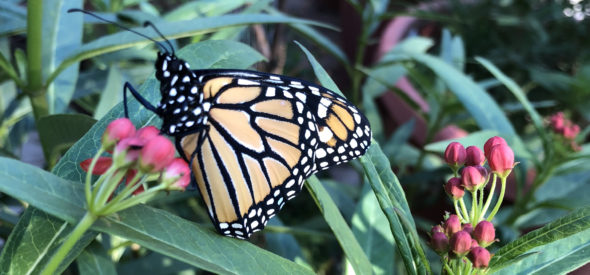
Last year my husband and I started making a concerted effort to protect Monarch butterflies in our backyard. We would sometimes see Monarchs in our yard and a little later, we would spy their striped caterpillars on my single milkweed plant but what happened to them after that was a mystery.
Over time, my single milkweed produced baby milkweed plants across a couple other pots and next thing you know we had 10 plus Monarch caterpillars in our yard and we wanted to protect them! So we decided to learn more.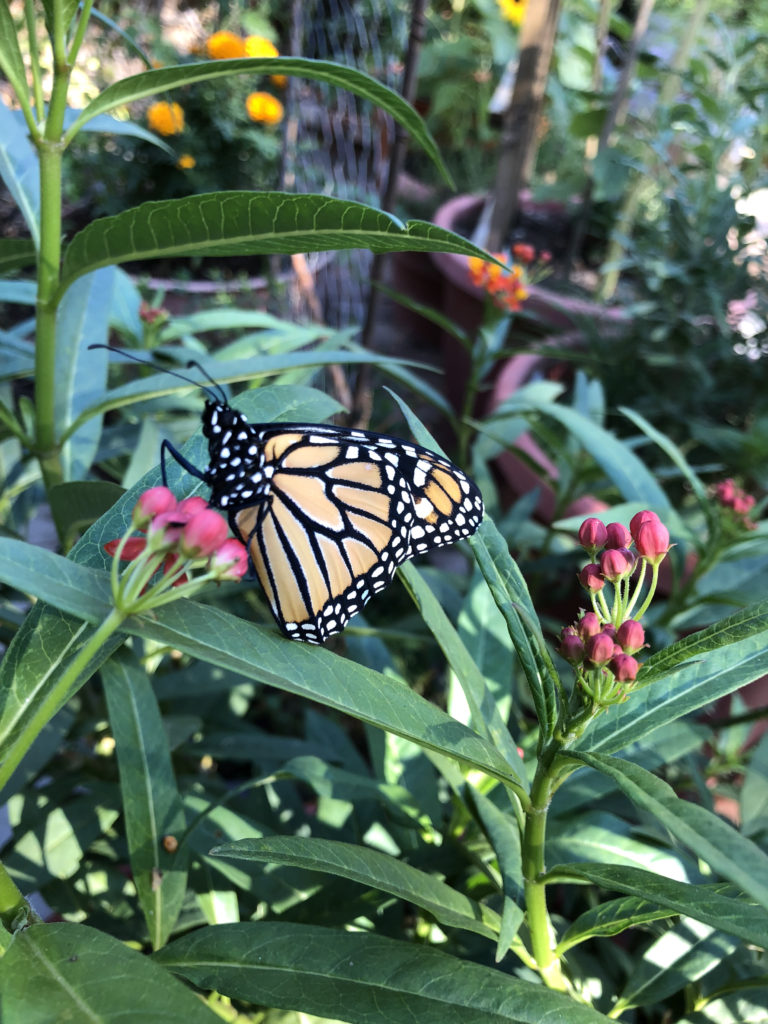
It has been surprisingly easy to learn how to protect and help propagate Monarch butterflies! And what a rewarding experience this has been for our whole family! Eric and I especially feel like proud parents to all our cats (caterpillars) and butters (butterflies). Some of the gardeners I respect on Instagram were supporting butterflies as part of their gardening and @deannacat3 on Instagram has staggering amounts of inspiration and tutorials on her page. (We are on Instagram too!) We committed to building a habitat after seeing her birth dozens of butterflies in her backyard. Here’s our fancy habitat.
Eric made it from some discarded raised bed hutch pieces. The front is on a hinge and we just shove it closed. We covered the inside with landscape fabric to keep the cats from escaping. Although they still do. We are going to make a bottom for it soon. A large milkweed plant lives inside there.
You see that Monarch Waystation sign? We signed up for Waystation status here. You need a certain amount of space and a certain number of butterfly-supporting plants to apply. The application process is really great at helping you hone exactly what you need and can aquire to support your monarchs. (There are other varieties of butterflies you can support too, but this is the one I’m most familiar with.)
Here’s a better lit shot of our habitat pre-landscaping fabric and pre-waystation signage.
We have several food sources for our butterflies and that includes lots and lots of milkweed. We mostly have Common Milkweed (Asclepias syriaca). We have a few native varieties but they haven’t taken off yet. Milkweed is the plant that butterflies and caterpillars both eat and it’s the plant Monarch mamas lay their eggs on so…it’s your main host plant. You can’t have too much of it.
And good news, because a milkweed plant seeds and flowers at the same time (this is unusual for a plant, as you may suspect). We have started hundreds of seedlings from seeds. They come out of the pods on whispy silks and yes I do remove those when harvesting the seeds. Kind of a pain. But I appreciate their purpose of blowing milkweed seeds far and wide. Pro-tip: the seeds like to spend some time in the fridge or freezer before being planted.
Other nectar plants include Cosmos, French Marigold, Lantana, Salvia, Verbena and Zinnia. We also have Bee Balm, Butterfly Bush, Catmint, Coreopsis, Sedum and Violets. I really want to get some Mallow too as it one of my favorite natives. There is a list of plants to choose from at the Monarch Watch link.
Scabiosa is not on the list but it’s a good butterfly magnet too and I just love the flowers. 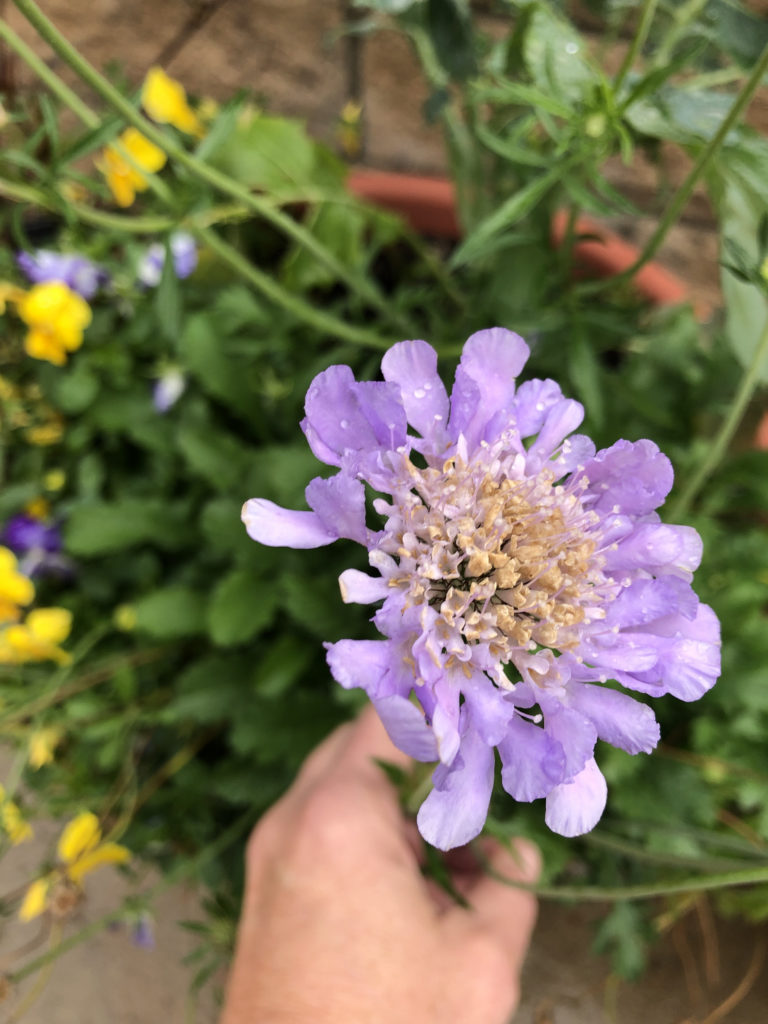
You need good garden practices to support your caterpillars too. I grow vegetables for the most part but I can’t chemically treat for cabbage worms or tomato hornworms because even organic remedies like Bt doesn’t differentiate between “good” and “bad” caterpillars. So I have to hand-pick the predators (like cabbage worms) off my plants. This is why my broccoli looks like this right now.
(We just had rain as you can see!) Pro-Tip: I practice vegetable gardening in a way to confuse predators. I plant my broccoli, for example, in four different places in my yard. Although three areas got hit pretty bad, one area is without damage. Another way to defeat predators and head off invasions is to plant different veggies, herbs and flowers in each area, again to confuse predators and not allow them to easily hop around to their preferred plant with ease.
Enough about vegetable gardening and back to our butterfly habitat. You now have a beautiful flower garden going (in ground or in pots, it doesn’t matter – my entire garden is in containers) and it looks beautiful and inviting. You will soon discover another great thing about all that milkweed… bonus! Bees love it! Bees also the love other nectar plants you will be installing too. Sweet symbiosis!
Now everything is comfy, cozy and organically natural to invite your mama Monarch butterflies. Put on some Barry White and they will come to eat and rest and lay their eggs on your milkweed. You may even catch them in action laying their eggs!
If you have good eyes you can look for the eggs. If you miss the eggs, you will hopefully start to see the little caterpillars. They can be so, so tiny.
That yellow-ish spot is a tiny egg. Below is teeny baby cat. Caterpillars go through instar stages and this one is probably one or two.
See all that poop? They are poop machines! If you are ever in the garden and see those little black pellets then you know a caterpillar is afoot…for better or worse. (Snails also leave little black pellets – full disclosure.)
When you find an egg or cat, gently remove the leaf they are on and transport them to your habitat. Place the leaf on the soil at the base of the plant and the caterpillars will crawl up on the milkweed plant all on their own. So proud!
We try to keep a large healthy milkweed inside the habitat to feed all the cats. Once we had so many, I squeezed in a second plant. Monarch caterpillars are good eaters so keep lots of milkweed on hand. Milkweed is so easy to grow from seed, as discussed above, and you should do that as they are fairly expensive in stores.
You can practically HEAR these guys/gals munching down. They’re so chunky I just want to squeeze them! (Don’t squeeze them.)
As an alternative, if you want to keep a closer eye on your eggs or tiny cats, you can put the egg on a leaf, or the tiny caterpillar on a leaf, in a small tupperware-style container with a couple extra milkweed leaves. They don’t need water or airholes. When the hatches and they get a bit bigger, transfer them to a larger habitat.
In addition to our big outdoor habitat we have a small pop-up we use in bad weather. I also use them for really small cats, or in case we are worried a chrysalis or caterpillar is diseased. It’s rare but parasitic wasps can infect a caterpillar and that can infect your whole colony so if something doesn’t look right, we just move it to the monarch hospital.
One problem with milkweed is aphids. They LOVE it. But for us, the aphids are quite a nuisance. Most often, I spray them off with the hose or wipe them off with my fingers. Worse comes to worse some soap spray as long as there are no obvious cats on board. A release of ladybugs is always delightful! A win/win except for the aphid.
Okay Monarch warriors! You have your habitat and your have your milkweed and you have your transferred caterpillars, what’s next? After that caterpillar gets nice and fat, they will crawl off the plant and generally find somewhere high up (the top of our habitat) and “J.” A lot of ”J”ing going on here!
They literally make their body into a “J.” And from that “J”, they will create their chrysalis. Here a cat checks out his mate’s chrysalis. We find cats sometimes like to “J” and chrysalis in the same spot.
This was a chrysalis pairing. One has been born and released and the other is almost ready.
They are staggeringly beautiful.
Here you can see how the butterfly spins a little white webbing to adhere its chrysalis.
Now this is advanced Monarch butterfly propagating but you can MOVE a chrysalis. If you find one in an unprotected place in your yard or two butterflies chrysalis too close to each other you can carefully snip the webbing, and using either tape or some dental floss, you can reattach the chrysalis to a better place. The dental floss can be tied around a horizontal stick as we attached inside our habitat or if using a small netted habitat, I tie the dental floss to a safety pin on the top of the habitat.
Now for the final stages of your fostering! The butterfly will emerge probably when you aren’t watching. I caught this one pretty quick. One day I will catch them emerging!
The butterfly needs a few hours at least to unfurl, dry out (I hear ya, butterfly!) and strengthen their wings.They will open and close their wings, start to walk around the roof of the habitat and start to look a little stronger. Butterflies come in all sizes. And you can tell boys from girls but I haven’t mastered that yet. Males are slightly larger than females but not enough to make it an identifier. Here’s some ways to tell from their markings.
If the weather is nice: no rain or strong wind, a few hours of solid daylight left, then you can open your habitat! This video shows one marching around, getting some strength-training in.
Sometimes butterflies make a hasty retreat, sometimes they like to take a ride on your hand or rest on your arm or just be put down on some milkweed to chill a bit more. You can carefully put your finger near the butterfly’s head to let it crawl on your finger and then transport it…this is the big finale. I hope you feel inspired to start your own protected Monarch butterfly habitat. It’s such a joy!
Even Buster feels protective of our babies! Happy Gardening!
